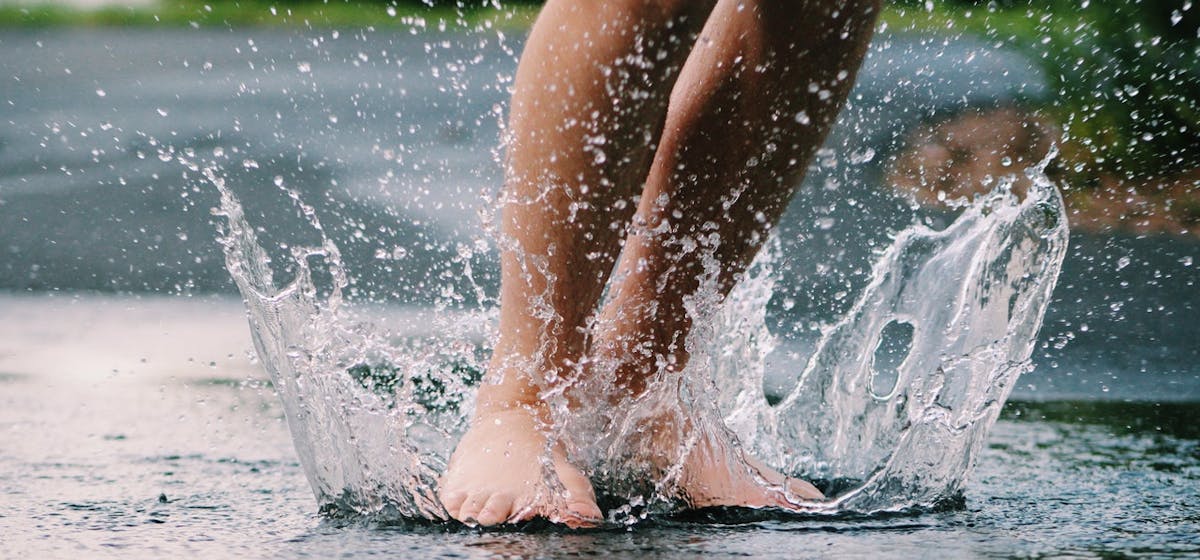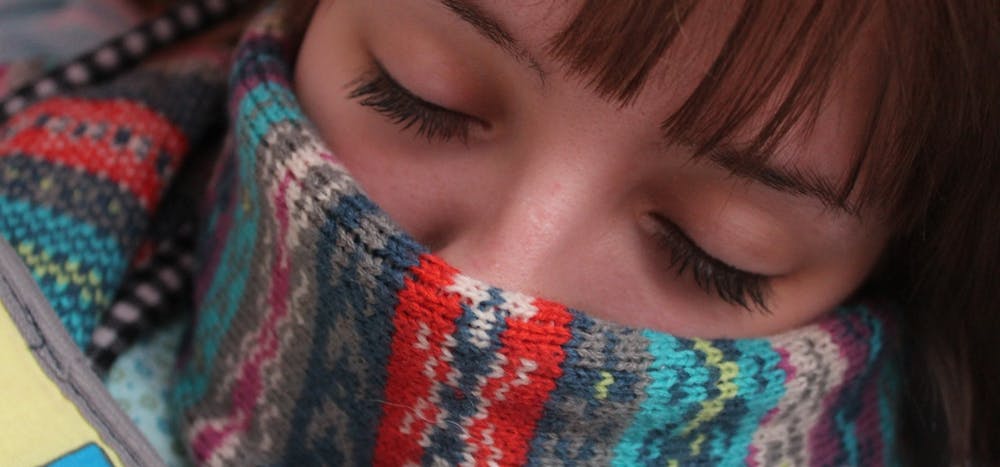Why Does Wear Damp Socks to Bed
There is a whole raft of offbeat ideas out there for treating minor ailments such as the common cold. Some are totally ineffective, but others actually work surprisingly well. One such 'hidden gem' is the advice to wear a pair of wet socks to bed when you feel a cold or sniffle coming on. According to folklore wisdom, wearing wet socks in bed helps draw blood down to your feet, thereby boosting your circulation and helping to clear congestion in the upper respiratory passages around your nose, head and throat. It is also said to boost your immune system response all around your body.
It is advised to start by warming your feet in a bowl of warm water, then placing a pair of thin socks in some cold water until they are soaked through. This pair should preferably be made from 100% cotton. Wring out the socks and put them on over your wet feet. Add an outer pair of dry socks and go to bed.
The outer pair should be 100% woollen socks that are pulled onto your feet directly over the top of the wet ones to stop your sheets from becoming damp and prevent your feet from sticking to the sheets as you move about. Repeat this for three nights in a row and examine how you feel after that. Apparently, you will start to feel a significant difference as your cold symptoms start to disappear. Keep your feet covered by your sheets, blanket or duvet all night for maximum effect.
How does wearing wet socks to bed actually work?
It's strange, but true that this trick does seem to have a good effect on people suffering from the common cold. The science behind what happens if you wear wet socks to bed is based around encouraging your blood vessels to constrict from the cold, damp socks wrapped around your feet and ankles, which sends all the healing nutrients up the body and into your organs and tissues. These give your immune system a boost and helps your body to fight off the virus or infection that is attacking you and causing you to succumb to the common cold.
As the water in your socks dries and your body temperature starts to rise again, so your blood vessels dilate again, helping the bloodstream to eject any nasties out of the body. As your body reacts to the changes in temperature, so your circulation and lymphatic system are stimulated. This helps decrease congestion too, as your body finds it easier to drain away excess fluids.
Wet socks: placebo effect?
Many people would rather fight on through their cold unaided rather than pull on a pair of cold, wet socks when they're already feeling rough and craving warmth and comfort instead. But other people like to take action and try anything they can to ease their symptoms. For this latter group, the so-called 'wear wet socks to bed myth' could be seen as exactly that – a myth, or placebo that lets you feel that you are doing something positive and therefore will feel your spirits rise.
Approaching a cold when you are in a better mood can help you fight off the symptoms faster, or at least not get too bogged down in feeling sorry for yourself. So, even if you don't believe there is any scientific benefit to wearing damp bed socks, you can still benefit from the treatment as a placebo. It can help your feet stay cool when you might be running a fever elsewhere, so that can also help you start to feel more like your normal self.
What are the other benefits of wearing wet socks to bed?
As said above, wearing wet socks to bed can help keep your feet colder, which can really help you feel fresh and cool on stuffy nights, or if your bedclothes are especially heavy. It is an extremely cost-effective way to tackle a cold, as you only need two pairs of socks and some warm and cold water. You shouldn't be allergic to the treatment or suffer any unpleasant side effects and your whole body can often benefit from a gentler, more holistic approach to self-healing and looking after yourself when you are feeling under the weather.
In addition, the cold temperature of the wet socks will help constrict your blood vessels, which then dilate again as your feet warm up and the socks dry out. This change in temperatures can stimulate all kinds of body functions, including the circulation and lymphatic system, both of which benefit hugely from a boost like this. Wearing socks to bed like this can therefore help, not just with healing colds, but also with keeping you fitter during the colder winter months and more vulnerable times of the year.
As with any treatment, however, if you are at all concerned, consult your doctor before going ahead with it. People affected by diabetes, Raynaud's syndrome or arterial concerns should especially seek advice prior to embarking upon this form of treatment. Never dip your socks into ice-cold water, or apply crushed ice or ice cubes directly to your skin, as this can be painful and cause an injury or shock.

Do wet socks cure a hangover?
Wearing wet socks to bed for a hangover cure is another area that people tend to be curious about. After all, who wouldn't love to find the ultimate hangover fixer, especially if it is easy and free to do. It is certainly worth trying if you are not too drunk to sort it all out. As discussed above, the act helps to lower your temperature, which in turn helps to regulate your blood pressure, eases you into sleep and helps get rid of any alcohol-derived nasties in your bloodstream faster, via the lymphatic system and circulatory system.
If nothing else, you should wake up feeling more refreshed than you would have done without trying this magic, wet sock treatment. It can help your digestive system too, as the blood flow encourages the stomach and guts to kick in too and function properly. Making it much easier to tackle that hangover-hammering 'full English' in the morning.
What causes the common cold?
The common cold has proven a worthy adversary against human scientists for centuries. We are all familiar with its many symptoms, which can include a sore or scratchy throat, a blocked or runny nose, a mild headache, aches elsewhere in the body, sneezing, high temperature and a general feeling of lethargy and being unwell. Adults tend to have around two to three colds per year, with the risk being higher in the winter.
Children often have more than that, even up to eight or ten colds annually, due to the fact that they tend to touch and hug each other more and share snacks, cups and toys, thus spreading the virus around a class at school or a hobby-related group very quickly.
Back in the 1950s, scientists discovered the main group of pathogens that cause the cold, known as rhinoviruses. Rhinoviruses are said to account for up to 75% of cold symptoms in adults. However, despite extensive research, a cure for the common cold still eludes humanity. The main challenge has been around the fact that there are so many strains of rhinoviruses around that it is impossible to create a vaccine or medicine that defeats them all.

Best way to protect yourself from a cold
While it might seem alarming that there is no cure, don't panic! There is plenty you can do to protect yourself from catching a cold. Steer clear of people who are showing signs of a cold as much as possible, especially if you are immune-suppressed or have other conditions that could be exacerbated by a cold.
Practise excellent hygiene – wash your hands every time you come in from public places, especially,
- public transport
- doctor's surgeries
- and hospitals.
Keep surfaces clean at home, especially those used to prepare food. Throw tissues away after use and avoid smoking, drinking to excess or touching your face or mouth.
If you sneeze, do so into a tissue or handkerchief to stop the virus spreading. Take preventative medicine if you feel early symptoms, such as a tickle in your throat, a headache or the start of congestion. Keep yourself warm when you have just had a shower or bath, and wrap up well when venturing outside in colder conditions.
Warm and dry socks?
A key way to keep your body fit and well is to keep its extremities warm. You can lose a lot of heat through the feet and hands, so keep them covered up if you start to feel cold. While you may want to try out the wet socks in bed trick, make sure you have plenty of warm, dry socks to cover up the damp pair and to change into when you wake up in the morning.
If your sock drawer is looking less than replete, perhaps it is time to invest in some more socks. Choosing a sock subscription service offers you the very best in flexibility and choice. You get the excitement of a brand new pair of socks arriving every month, and you can customise your subscription by stating your preferences for style and usage, e.g. classic socks, sports socks or funky designs for festive occasions.
Why Does Wear Damp Socks to Bed
Source: https://thesockbutler.co.uk/blog/wearing-wet-socks-to-bed
Post a Comment for "Why Does Wear Damp Socks to Bed"